OAuth 2.0 with Gmail over IMAP for service account (DotNetOpenAuth)

In this article I’ll show how to access Gmail account of any domain user, using OAuth 2.0, .NET IMAP component and service accounts. The basic idea is that domain administrator can use this method to access user email without knowing user’s password.
This scenario is very similar to 2-legged OAuth, which uses OAuth 1.0a. Although it still works, it has been deprecated by Google and OAuth 2.0 service accounts were introduced.
The following describes how to use XOAUTH2 and OAuth 2.0 to achieve the equivalent of 2-legged OAuth.
Google APIs console
First you need to visit the Google Developers Console and create a service account:
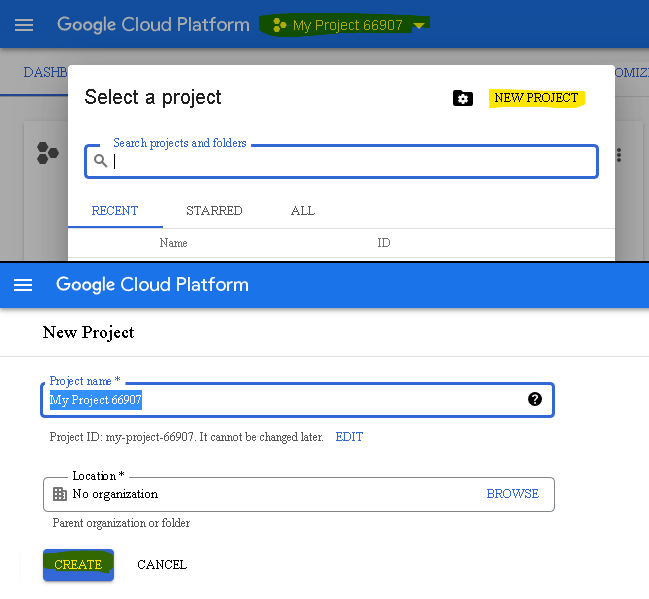
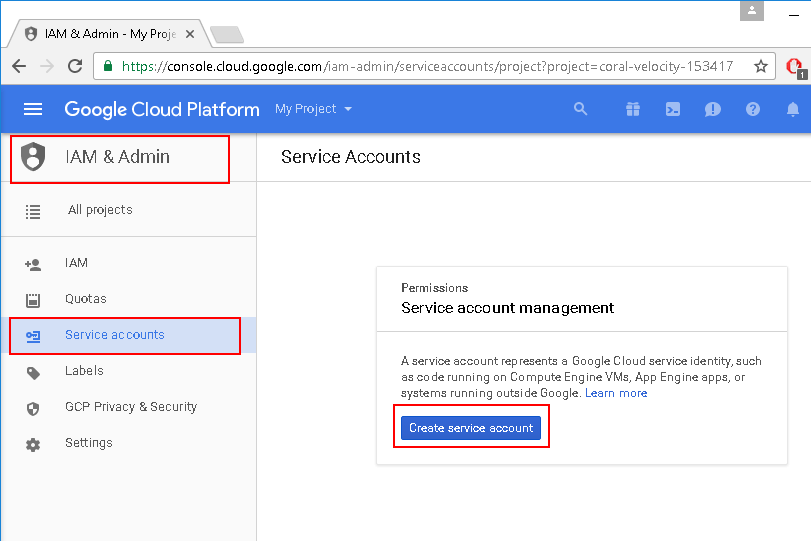
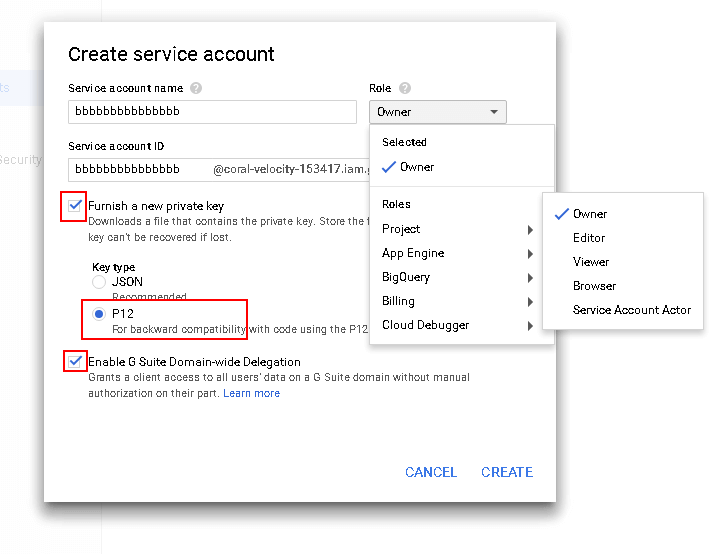
Download and save this private key, you’ll need that later:
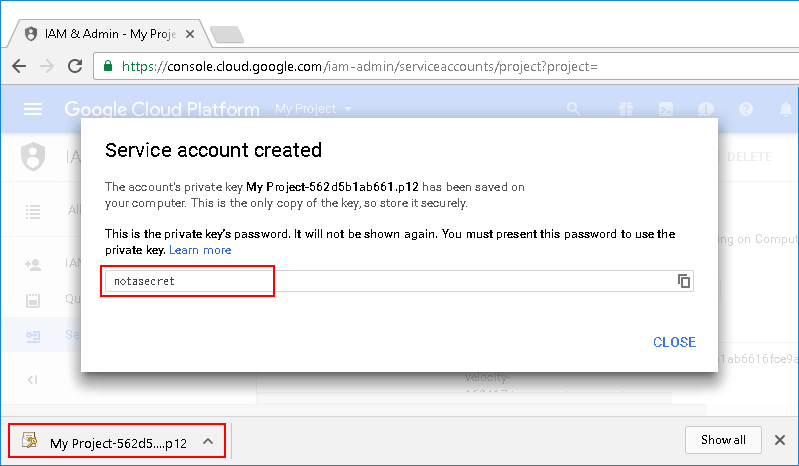
Go to “Service accounts” and click “View Client ID”:
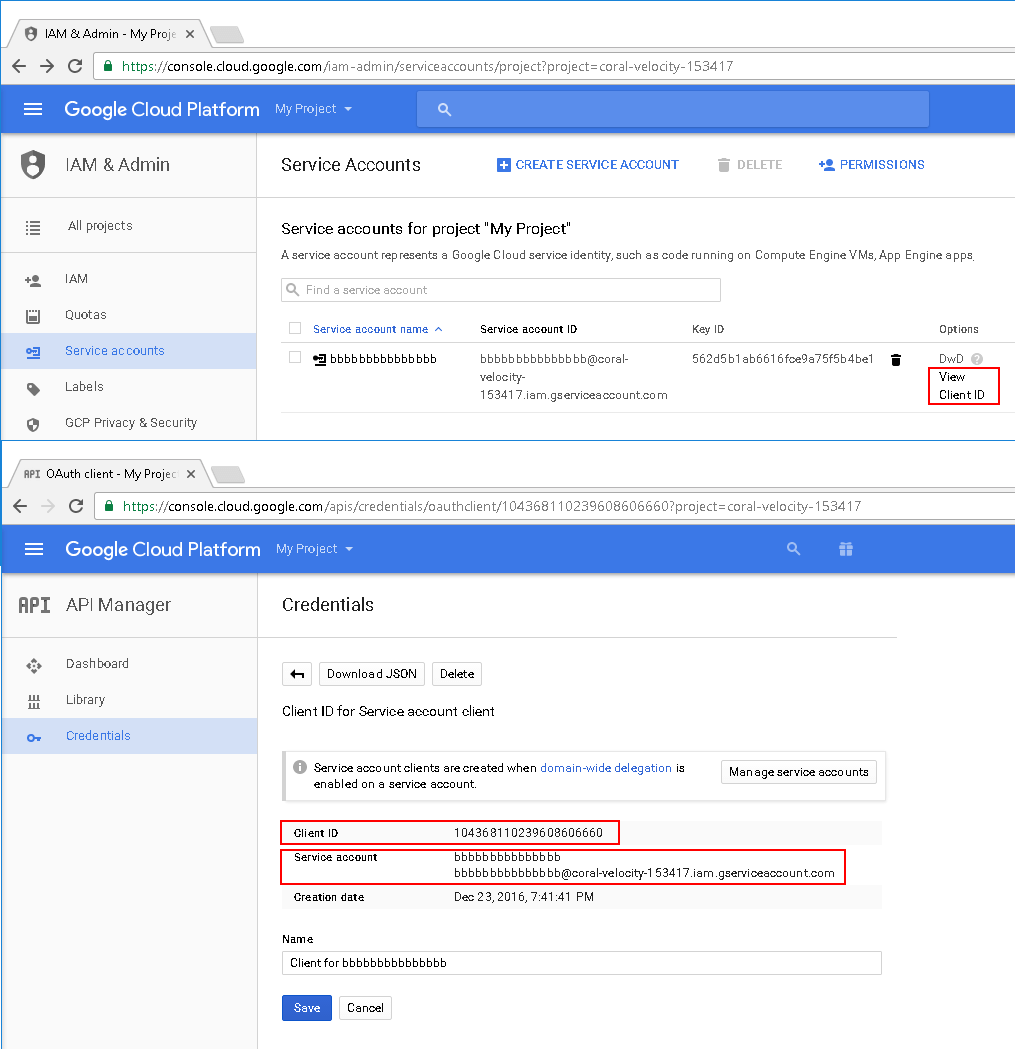
Make a note of the Client ID and Email address (Service account).
Google Apps Dashboard
Next step is to authorize access for newly created service account.
Visit your domain administration panel:
https://www.google.com/a/cpanel/yourdomain.com/ManageOauthClients
Then click “Advanced tools”, “Authentication” and “Manage third party OAuth Client access”.
On this screen you can authorize service account to access email scope:
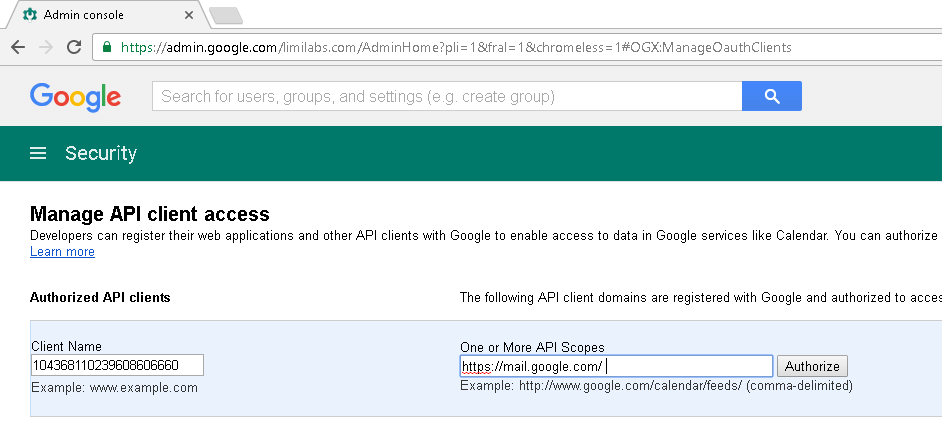
Use previously remembered Client ID and “https://mail.google.com/”, which is IMAP/SMTP API scope:
Client Name: 1234567890
One or More API Scopes: https://mail.google.com/
DotNetOpenAuth
DotNetOpenAuth is free, open source library that implements OAuth 2.0.
However you can not use the latest version. This is because Google has not updated their code to work with the most recent release. You’ll need to use 4.0 version.
Newtonsoft.Json
The other library you’ll need is Newtonsoft.Json JSON library. You can download it here: https://github.com/JamesNK/Newtonsoft.Json/releases or use nuget.
Access IMAP/SMTP server
using System;
using System.Text;
using System.Security.Cryptography;
using System.Security.Cryptography.X509Certificates;
using Newtonsoft.Json;
using DotNetOpenAuth.Messaging;
using DotNetOpenAuth.OAuth2;
using DotNetOpenAuth.OAuth2.Messages;
using Limilabs.Client.Authentication.Google;
using Limilabs.Client.IMAP;
using Limilabs.Mail;
const string serviceAccountEmail = "name@xxxxxxxxxx.gserviceaccount.com";
const string serviceAccountCertPath = @"c:\XYZ.p12";
const string serviceAccountCertPassword = "notasecret";
const string userEmail = "user@your-domain.com";
X509Certificate2 certificate = new X509Certificate2(
serviceAccountCertPath,
serviceAccountCertPassword,
X509KeyStorageFlags.Exportable);
AuthorizationServerDescription server = new AuthorizationServerDescription
{
AuthorizationEndpoint = new Uri("https://accounts.google.com/o/oauth2/auth"),
TokenEndpoint = new Uri("https://oauth2.googleapis.com/token"),
ProtocolVersion = ProtocolVersion.V20,
};
AssertionFlowClient provider = new AssertionFlowClient(server, certificate)
{
ServiceAccountId = serviceAccountEmail,
Scope = Limilabs.Client.Authentication.Google.GoogleScope.ImapAndSmtp.Name,
ServiceAccountUser = userEmail,
};
IAuthorizationState grantedAccess = AssertionFlowClient.GetState(provider);
string accessToken = grantedAccess.AccessToken;
using (Imap client = new Imap())
{
client.ConnectSSL("imap.gmail.com");
client.LoginOAUTH2(userEmail, accessToken);
client.SelectInbox();
List<long> uids = client.Search(Flag.Unseen);
foreach (long uid in uids)
{
var eml = client.GetMessageByUID(uid);
IMail email = new MailBuilder().CreateFromEml(eml);
Console.WriteLine(email.Subject);
}
client.Close();
}
AssertionFlowClient
I’ll need to add several classes defined below. You can also browse Google APIs Client Library for .NET.
using System;
using System.Security.Cryptography;
using System.Security.Cryptography.X509Certificates;
using System.Text;
using Limilabs.Client;
using Limilabs.Client.Authentication.SSPI.Ntlm;
/// <summary>
/// Assertion flow header used to generate the assertion flow message header.
/// </summary>
public class AssertionFlowHeader
{
/// <summary>
/// Gets or sets the encryption algorithm used by the assertion flow message.
/// </summary>
[Newtonsoft.Json.JsonPropertyAttribute("alg")]
public String Algorithm { get; set; }
/// <summary>
/// Gets or sets the type of the claim.
/// </summary>
[Newtonsoft.Json.JsonPropertyAttribute("typ")]
public String Type { get; set; }
};
/// <summary>
/// Google assertion flow header holding Google supported values.
/// </summary>
public class GoogleAssertionFlowHeader : AssertionFlowHeader
{
/// <summary>
/// The google signing algorithm, currently RSA-SHA256
/// </summary>
public const string GoogleSigningAlgorithm = "RS256";
/// <summary>
/// The type of the google assertion, currently JSON Web Token
/// </summary>
public const string GoogleAssertionType = "JWT";
public GoogleAssertionFlowHeader()
{
Algorithm = GoogleSigningAlgorithm;
Type = GoogleAssertionType;
}
};
/// <summary>
/// Assertion flow claim used to generate the assertion flow message claim.
/// </summary>
public class AssertionFlowClaim
{
public AssertionFlowClaim()
{
DateTime begin = new DateTime(1970, 01, 01, 0, 0, 0, DateTimeKind.Utc);
IssuedAt = (long)(DateTime.UtcNow - begin).TotalSeconds;
ExpiresAt = IssuedAt + 3600;
}
public AssertionFlowClaim(AuthorizationServerDescription authorizationServer)
: this()
{
Audience = authorizationServer.TokenEndpoint.ToString();
}
/// <summary>
/// Gets or sets the assertion flow issuer (e.g client ID).
/// </summary>
[Newtonsoft.Json.JsonPropertyAttribute("iss")]
public String Issuer { get; set; }
/// <summary>
/// Gets or sets the service account user (for domain-wide delegation).
/// </summary>
[Newtonsoft.Json.JsonPropertyAttribute("prn")]
public String Principal { get; set; }
/// <summary>
/// Gets or sets the scope.
/// </summary>
[Newtonsoft.Json.JsonPropertyAttribute("scope")]
public String Scope { get; set; }
/// <summary>
/// Gets or sets the token endpoint.
/// </summary>
[Newtonsoft.Json.JsonPropertyAttribute("aud")]
public String Audience { get; set; }
/// <summary>
/// Gets or sets the expected expiration of the token to retrieve.
/// </summary>
[Newtonsoft.Json.JsonPropertyAttribute("exp")]
public long ExpiresAt { get; set; }
/// <summary>
/// Gets or sets the UTC timestamp at which this claim has been built.
/// </summary>
[Newtonsoft.Json.JsonPropertyAttribute("iat")]
public long IssuedAt { get; set; }
};
/// <summary>
/// Assertion flow message to be sent to the token endpoint.
/// </summary>
public class AssertionFlowMessage : MessageBase
{
/// <summary>
/// Google supported assertion type
/// </summary>
public const string GoogleAssertionType = "http://oauth.net/grant_type/jwt/1.0/bearer";
/// <summary>
/// Initializes a new instance of the <see cref="AssertionFlowMessage"/> class.
/// </summary>
/// <param name='authorizationServer'> Authorization server description. </param>
public AssertionFlowMessage(AuthorizationServerDescription authorizationServer) :
base(new Version(2, 0), MessageTransport.Direct, authorizationServer.TokenEndpoint)
{
GrantType = "assertion";
AssertionType = GoogleAssertionType;
this.HttpMethods = HttpDeliveryMethods.PostRequest;
}
/// <summary>
/// Gets or sets the type of the grant (defaults to "assertion").
/// </summary>
[MessagePart("grant_type", IsRequired = true)]
public String GrantType { get; set; }
/// <summary>
/// Gets or sets the type of the assertion
/// (defaults to "http://oauth.net/grant_type/jwt/1.0/bearer").
/// </summary>
[MessagePart("assertion_type", IsRequired = true)]
public String AssertionType { get; set; }
/// <summary>
/// Gets or sets the assertion message.
/// </summary>
[MessagePart("assertion", IsRequired = true)]
public String Assertion { get; set; }
};
public class AssertionFlowClient : ClientBase
{
/// <summary>
/// Gets or sets the service account identifier.
/// </summary>
/// <value>
/// The service account identifier.
/// </value>
public String ServiceAccountId { get; set; }
/// <summary>
/// Gets or sets the service account user (used for domain-wide delegation).
/// </summary>
public String ServiceAccountUser { get; set; }
/// <summary>
/// Gets or sets the scope to get access for.
/// </summary>
public String Scope { get; set; }
/// <summary>
/// Gets the certificate used to sign the assertion.
/// </summary>
public X509Certificate2 Certificate { get; private set; }
/// <summary>
/// Gets or sets the JWT claim's header (defaults to Google's supported values).
/// </summary>
public AssertionFlowHeader Header { get; set; }
public RSACryptoServiceProvider Key { get; private set; }
/// <summary>
/// Initializes a new instance of the
/// <see cref="AssertionFlowClient"/> class.
/// </summary>
/// <param name='authorizationServer'>
/// Authorization server description.
/// </param>
/// <param name='certificate'>
/// Certificate to use to sign the assertion flow messages.
/// </param>
public AssertionFlowClient(
AuthorizationServerDescription authorizationServer,
X509Certificate2 certificate)
: base(authorizationServer, null, null)
{
if (certificate == null)
throw new ArgumentNullException("certificate");
if (certificate.PrivateKey == null)
throw new ArgumentNullException("certificate.PrivateKey");
Header = new GoogleAssertionFlowHeader();
Certificate = certificate;
// Workaround to correctly cast the private key as a RSACryptoServiceProvider type 24
RSACryptoServiceProvider rsa = (RSACryptoServiceProvider)certificate.PrivateKey;
byte[] privateKeyBlob = rsa.ExportCspBlob(true);
Key = new RSACryptoServiceProvider();
Key.ImportCspBlob(privateKeyBlob);
}
/// <summary>
/// Helper method to retrieve the Authorization State.
/// </summary>
/// <returns>
/// The authorization state.
/// </returns>
/// <param name='provider'>
/// The provider to use to retrieve the authorization state.
/// </param>
public static IAuthorizationState GetState(AssertionFlowClient provider)
{
if (provider.Scope == null)
throw new ArgumentNullException("Scope");
IAuthorizationState state = new AuthorizationState(provider.Scope.Split(' '));
if (provider.RefreshToken(state, null))
{
return state;
}
return null;
}
/// <summary>
/// Request a new access token using the OAuth 2.0 assertion flow.
/// </summary>
/// <returns>
/// Whether or not a new access token has been successfully retrieved.
/// </returns>
/// <param name='authorization'>
/// Object containing the current authorization state.
/// </param>
/// <param name='skipIfUsefulLifeExceeds'>
/// If set to <c>true</c> skip if useful life exceeds.
/// </param>
public new bool RefreshToken(
IAuthorizationState authorization,
TimeSpan? skipIfUsefulLifeExceeds)
{
return RefreshToken(authorization, skipIfUsefulLifeExceeds, this.Channel.Request);
}
public bool RefreshToken(
IAuthorizationState authorization,
TimeSpan? skipIfUsefulLifeExceeds,
Func<IDirectedProtocolMessage, IProtocolMessage> requestProvider)
{
if (authorization == null)
throw new ArgumentNullException("authorization");
if (this.Certificate == null)
throw new ArgumentNullException("Certificate");
// Check if the token is still valid.
if (skipIfUsefulLifeExceeds.HasValue && authorization.AccessTokenExpirationUtc.HasValue)
{
TimeSpan timeSpan = authorization.AccessTokenExpirationUtc.Value - DateTime.UtcNow;
if (timeSpan > skipIfUsefulLifeExceeds.Value)
{
return false;
}
}
AssertionFlowMessage requestMessage = GenerateMessage();
var response = requestProvider(requestMessage);
// Response is not strongly-typed to an AccessTokenSuccessResponse because DotNetOpenAuth can't infer the
// type from the request message type. The only way to get access to the result data is through the
// resulting Dictionary.
if (response.ExtraData.ContainsKey("access_token") && response.ExtraData.ContainsKey("expires_in"))
{
authorization.AccessToken = response.ExtraData["access_token"];
long expiresIn = long.Parse(response.ExtraData["expires_in"]);
DateTime utcNow = DateTime.UtcNow;
authorization.AccessTokenExpirationUtc = utcNow.AddSeconds(expiresIn);
authorization.AccessTokenIssueDateUtc = utcNow;
authorization.SaveChanges();
return true;
}
return false;
}
/// <summary>
/// Generates the assertion flow message to be sent to the token endpoint.
/// </summary>
/// <returns>
/// The assertion flow message.
/// </returns>
private AssertionFlowMessage GenerateMessage()
{
string header = JsonConvert.SerializeObject(Header);
string claim = JsonConvert.SerializeObject(
new AssertionFlowClaim(AuthorizationServer)
{
Issuer = this.ServiceAccountId,
Principal = this.ServiceAccountUser,
Scope = this.Scope
});
StringBuilder assertion = new StringBuilder();
assertion.Append(UnpaddedUrlSafeBase64Encode(header));
assertion.Append(".");
assertion.Append(UnpaddedUrlSafeBase64Encode(claim));
// TODO: Check if this is working on FIPS enabled systems.
byte[] data = Encoding.ASCII.GetBytes(assertion.ToString());
String signature = UnpaddedUrlSafeBase64Encode(Key.SignData(data, "SHA256"));
assertion.Append(".");
assertion.Append(signature);
return new AssertionFlowMessage(this.AuthorizationServer)
{
Assertion = assertion.ToString()
};
}
/// <summary>
/// Encode the provided UTF8 string into an URL safe base64 string.
/// </summary>
/// <returns>
/// The URL safe base64 string.
/// </returns>
/// <param name='value'>
/// String to encode.
/// </param>
private String UnpaddedUrlSafeBase64Encode(String value)
{
return UnpaddedUrlSafeBase64Encode(Encoding.UTF8.GetBytes(value));
}
/// <summary>
/// Encode the byte array into an URL safe base64 string.
/// </summary>
/// <returns>
/// The URL safe base64 string.
/// </returns>
/// <param name='bytes'>
/// Bytes to encode.
/// </param>
private String UnpaddedUrlSafeBase64Encode(Byte[] bytes)
{
return Convert.ToBase64String(bytes)
.Replace("=", String.Empty)
.Replace('+', '-')
.Replace('/', '_');
}
};